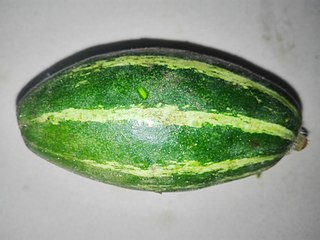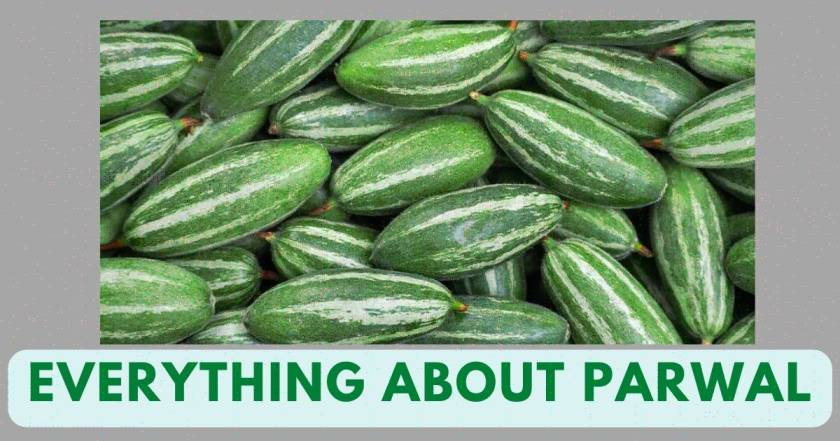Parwal Vegetable in English
- English name of Parwal Vegetable is “Pointed Gourd / Pointed Melon”

Parwal Vegetable / Pointed Gourd
Parwal, or pointed gourd, is not actually a melon at all, but rather a vegetable that can be used in many of the same ways as melons can be used. Originating in India, this fruit has grown popular in other parts of the world for its unique taste and health benefits. In this article, we’ll look at the main properties of this vegetable and discuss its use as both food and medicine.
Parwal Vegetable (Trichosanthes cucumerina) is also known as the pointed melon, and it’s native to India, China, Thailand, and other parts of Asia. Although this fruit has been eaten for centuries throughout the region, it’s more commonly grown as an ornamental plant in the U.S., where it has become popular in recent years as an addition to traditional pumpkin patches and fall festivities due to its pumpkin-like shape and orange skin tone. This vegetable, commonly used in Indian cooking, has been found to be effective in lowering blood sugar levels and preventing diabetes, and it can also help prevent prostate cancer.
Parwal Vegetable Benefits
Health Benefits of Parwal Vegetable are endless.
- Parwal is an excellent source of vitamin C, folic acid, and phosphorus, as well as a good source of dietary fiber, vitamin B1 (thiamine), and potassium.
- Among its antioxidants are quercetin flavonoids and several kaempferol glycosides such as kaempferol-3-O-rutinoside.
- Other nutrients present in smaller amounts include calcium, magnesium, zinc, and iron.
- Parwal is one of the excellent home remedies for weight loss because it contains pectin, which reduces appetite and helps to avoid constipation.
- Parwal has a high fiber content that makes it great for weight loss.
- Fiber-rich foods make you feel full and more satisfied than those low in fiber, and one cup of cooked Parwal contains nearly 20% of your daily recommended intake.
- Parwal vegetable also gives you a boost of energy—it’s loaded with iron, which helps red blood cells transport oxygen to your muscles and body tissue.
- Iron deficiency is common among women and children in Asia, so including an iron-rich food like Parwal in your diet is particularly beneficial for these groups.
- Parwal Vegetable may be especially important for pregnant women or those who struggle to maintain their health due to illness or chronic stress.








